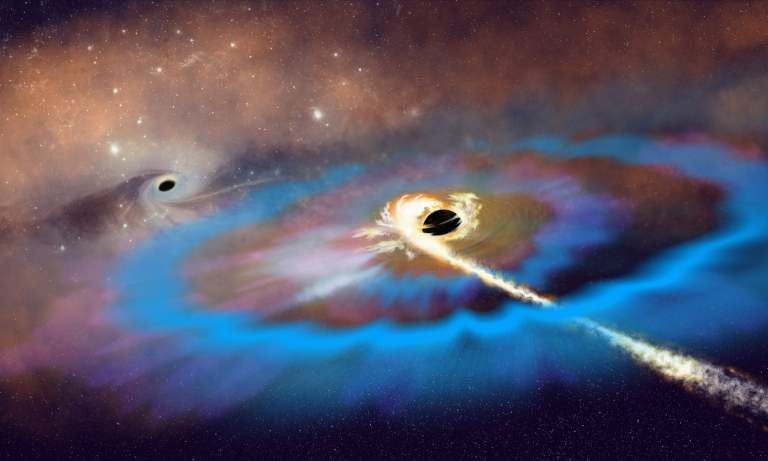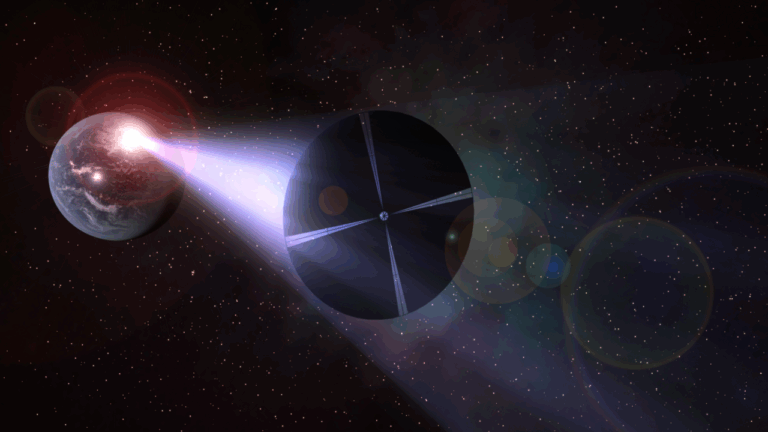Key Takeaways:
Q: If quasars are active galactic nuclei, then I would expect that they would be spread randomly throughout the universe. Why are quasars instead observed at far distances?
A: The simple answer: because luminous quasars are still visible from large distances, while fainter active galactic nuclei (AGNs) are not.
Quasars are the highest luminosity (more than 100 billion times that of the Sun) and most massive (more than 100 million solar masses) subset of AGNs. Their dimmer cousins are generally called Seyfert galaxies (with luminosities between 1 billion and 100 billion times that of the Sun, and masses between 1 million and 100 million solar masses).
A number of factors conspire to give the appearance that quasars are primarily at larger distances. First, because they are more luminous, we can detect them from farther away, while Seyfert galaxies are fainter and thus harder to see. Second, like the tallest people compared to those of average height, quasars are rare compared with their lower-luminosity counterparts. Third, the volume of space close to Earth is much smaller than that at large distances, so a single, uniformly distributed population would still appear to lie mostly far from us.
The combination of these factors leads us to see few quasars and many more Seyferts nearby and a gradual reversal as we look farther away and can no longer see the fainter sources. However, the reality is a bit more complex than this simple picture.
Quasars and other AGNs are distributed randomly in all directions over the sky but not in terms of distance. We usually measure distances in redshift, which tells us how much cosmic expansion has stretched light from a specific object; the more stretch, the farther away the galaxy is. The most distant AGNs known are around redshift 7, meaning the light has been traveling to reach us for 13 billion years. (The current age of the universe is roughly 13.8 billion years.) We think the first AGNs formed around redshifts of 7 to 10. At those distances, only the brightest — the quasars — are visible to us. The number of AGNs per unit of volume increases in regions of the universe that lie closer to us, redshifts of 3 to 5. This density peaks at a redshift of about 2 (when the universe was about 3.3 billion years old) and decreases at later times (closer to us). This means that AGNs are not distributed randomly throughout the universe.
We think that the supermassive black holes that power AGNs take a while to grow before “turning on” as active galaxies. They eventually reach a peak in energy output, and then they begin to run out of fuel as these black holes have either swallowed all the gas in their host galaxies or that material all turned into stars. Thus, the AGNs become fainter at later times and eventually stop being “active” galactic nuclei.
One more twist: Evidence suggests that the largest, most luminous AGNs (the quasars) grow the fastest and run out of fuel sooner than Seyfert galaxies. (This phenomenon is analogous to the evolution of stars, where the most massive burn their fuel fast [in millions of years] and blow up as supernovae, while smaller ones like our Sun are still middle-aged after billions of years.) We call this idea the “cosmic downsizing” of AGNs: Those that are active in later times are low-luminosity and low-mass ones. Perhaps the initial statement that quasars are mostly at large distances was not so far from the current “truth.”
Smithsonian Astrophysical Observatory, Cambridge, Massachusetts










